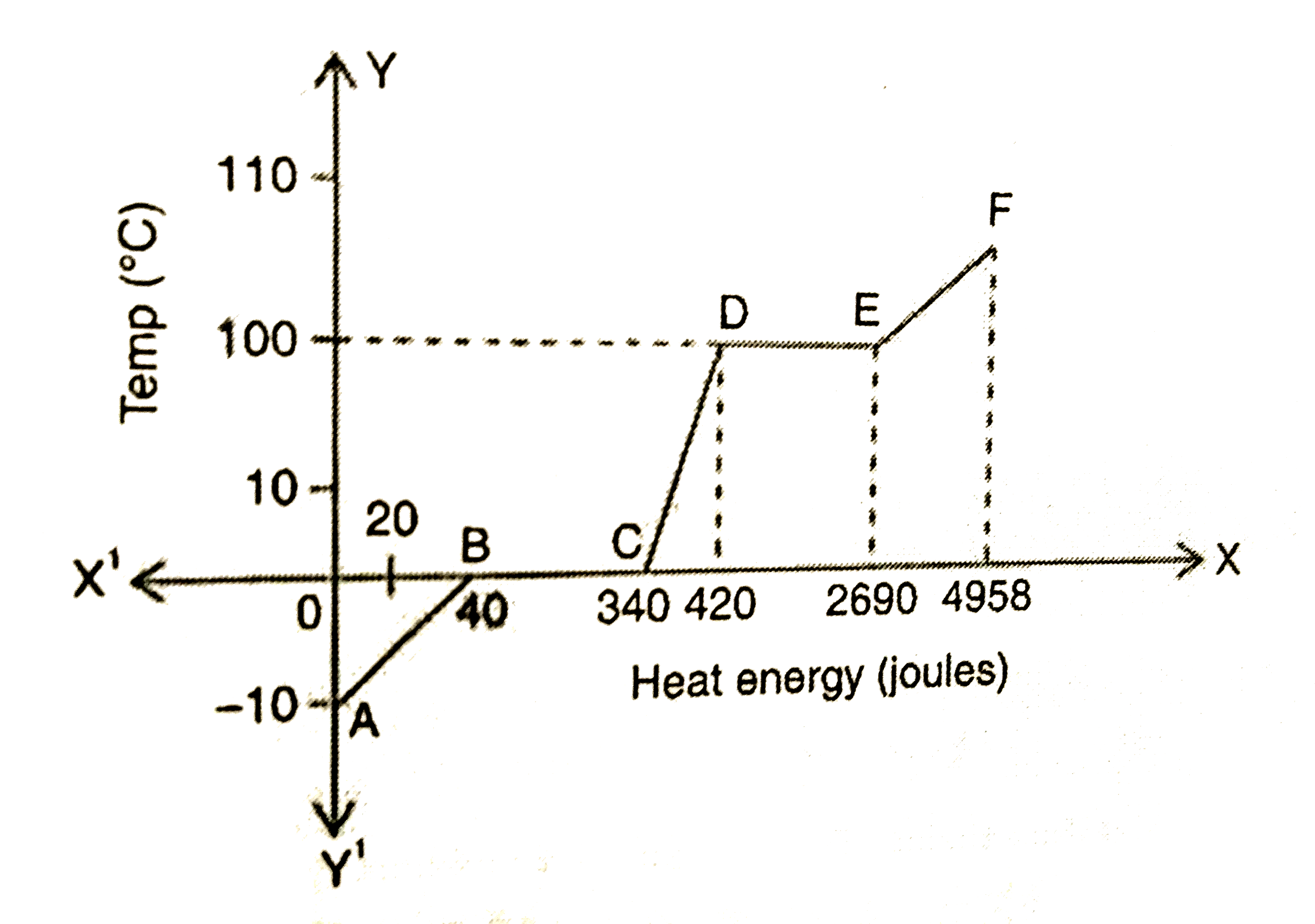If mass of the substacne is 20 g then the heat energy required to melt 1 g of the substacne is _______J

300
15
113.5
2270
The correct Answer is:b
The substance melts by absorbing 340 -40 =300 J of enegy i.e 20 g of substacne absrobs 30020=15J
of energy and melts without rise in temperature
Topper's Solved these Questions
- HEAT Book:PEARSON IIT JEE FOUNDATIONChapter:HEAT Exercise:Test 2
Explore 14 Videos
- HEAT Book:PEARSON IIT JEE FOUNDATIONChapter:HEAT Exercise:Level 3
Explore 7 Videos
- ElectricityBook:PEARSON IIT JEE FOUNDATIONChapter:ElectricityExercise:ASSESSMENT TEST (TEST-2)
Explore 15 Videos
- KINEMATICSBook:PEARSON IIT JEE FOUNDATIONChapter:KINEMATICSExercise:ASSESSMENT TEST (TEST 2 (SELECT THE CORRECT ALTERNATIVE)
Explore 15 Videos
Similar Questions
How much heat (in joule) is required to raise the temperature of 205g of water from 21.2∘C to 91.4∘C. Specific heate of water is 4.18Jg−1.∘C−1
Strategy : The specific heat of a substance is the amount of heat required to raise the temperature of 1g of the substance by 1∘C.
Thus
Specific heat
=(Amount of heat in joules)(Mass of substance in grams)(Temperature change in.∘C)
Rearrangement gives.
Amount of heat (q)= Mass of substance (m)× Specific heat
(c)× Temperature change (ΔT)
View SolutionA: The internal energy of a solid substance increases during melting.
R: Latent heat is required to melt a solid substance.
View Solution
Knowledge Check
The heating curve of a particular substance in solid state is as shows in the figure.Choose the correct alternative

If mass of the substance is 20 g then the heat energy required to melt 1 g the substacne is ______J.A300B15C113,50D2270If mass of the substacne is 20 g then the heat energy required to melt 1 g of the substacne is _______J
 A300B15C113,50D2270
A300B15C113,50D2270The heating curve of a particular substance in solid state is as shows in the figure.Choose the correct alternative

If mass of the substance is 20 g then the heat energy required to melt 1 g the substacne is ______J.A300B15C113.50D2270
Find the number of quanta of radiations of frequency 4.67×1013s−1, that must be absorbed in order to melt 5 g of ice. The energy required to melt 1 g of ice is 333J.
View SolutionThe heating curve of a particular substance in solid state is a shown in the figure .choose the correct alternative

The amount of heat energy absorbed by the substacne to change completely from liquid at its boiling point to gaseous state is _______J
View SolutionFind the number of quanta of radiations of frequency 4.67×1013s−1, that must be absorbed in order to melt 5 g of ice. The energy required to melt 1 g of ice is 333J.
View SolutionIf 0.5calg−1C−1 is the specific heat capacity of a substance of mass 50 g, calculate the amount of heat energy required to change the temperature of a substance from −5∘C to 10∘C
View SolutionThe amount of heat energy required to increase the temperature of 20 g of water by 1∘C is ______.
View Solution